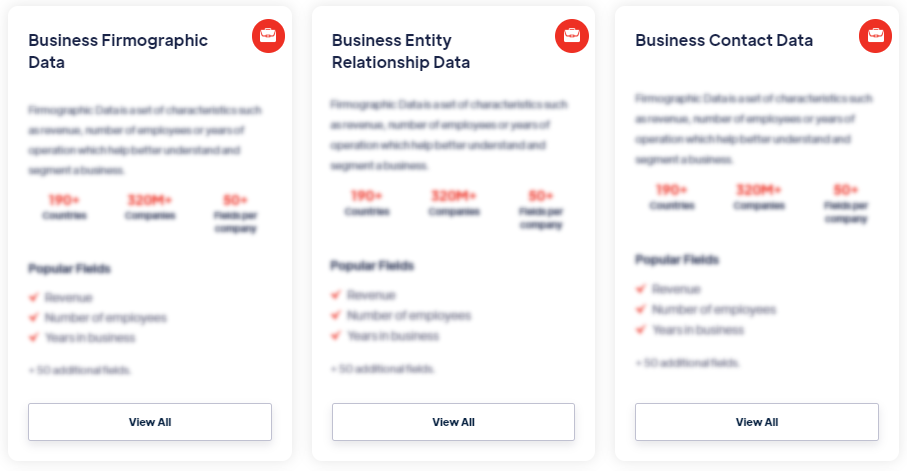Best
Visit Data
Products
Visit data represents information about visits to a particular location or website. It includes details such as the date and time of the visit, duration of the visit, pages or areas visited, actions taken during the visit, and any associated metadata like the visitor's IP address or device information. Read more
Our Data Integrations


Request Data Sample for
Visit Data

Browse the Data Marketplace

Frequently Asked Questions
1. What is visit data?
Visit data
represents information about visits to a particular location or
website. It includes details such as the date and time of the
visit, duration of the visit, pages or areas visited, actions
taken during the visit, and any associated metadata like the
visitor's IP address or device information.
2. Why is visit data important?
Visit data
provides insights into visitor behavior, engagement, and
preferences. It helps businesses and organizations understand
how visitors interact with their physical locations or online
platforms, identify popular areas or pages, measure user
engagement, and make data-driven decisions to enhance the
visitor experience or optimize business strategies.
3. How is visit data collected?
Visit data
can be collected through various methods depending on the
context. For physical locations, data can be gathered through
visitor sign-ins, access control systems, RFID tags, beacons, or
video surveillance. In the case of websites or online platforms,
visit data is typically captured using web analytics tools that
track user interactions, such as page views, clicks, navigation
paths, or form submissions.
4. What are the applications of visit data?
Visit data finds applications in several domains. In the retail
sector, it helps understand foot traffic patterns, identify peak
hours, and optimize store layouts or staffing. In the tourism
industry, visit data aids in monitoring visitor flows, analyzing
popular attractions, and improving tourism planning. For online
platforms, it assists in measuring website performance, user
engagement, and conversion rates, enabling targeted marketing
strategies and website optimization.
5. What types of information are included in visit data?
Visit data encompasses a range of information, including
timestamps of visits, unique visitor identifiers, visited
locations or pages, duration of each visit, entry and exit
points, and user interactions such as clicks or actions
performed. It may also include referral sources, user
demographics if available, and other contextual information
relevant to the visit.
6. How is visit data analyzed?
Visit data
analysis involves examining patterns, trends, and key metrics to
gain insights into visitor behavior and preferences. Common
analysis techniques include calculating visit duration, bounce
rates, conversion rates, or performing segmentation based on
visitor characteristics or actions. Data visualization,
statistical analysis, and machine learning approaches can be
employed to uncover meaningful patterns and derive actionable
insights from visit data.
7. What are the challenges in analyzing visit data?
Analyzing visit data can present challenges such as data
quality, privacy concerns, and interpreting visitor intent.
Ensuring data accuracy and completeness is important for
reliable analysis. Privacy regulations and ethical
considerations need to be addressed to protect visitor
information. Additionally, understanding the visitor's
intent or motivation behind their actions may require additional
contextual data or qualitative research to complement the
quantitative analysis.
